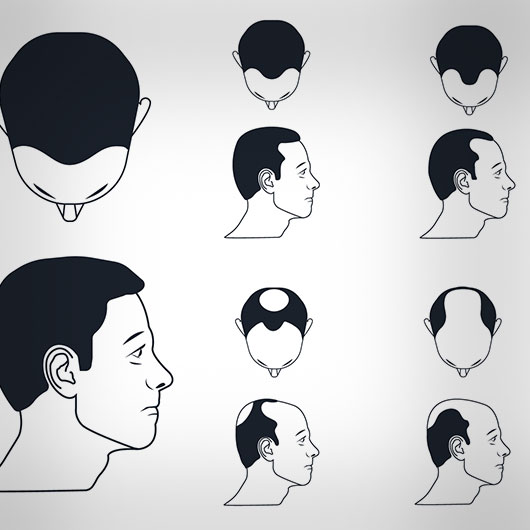Understanding the causes of hair loss can help you detect its beginning stages. Unfortunately, hair loss affects people at any point in their life, sometimes beginning in their 20s.
According to the Mayo Clinic, the most common cause of hair loss is a hereditary condition called male pattern baldness and female pattern baldness. The genetic predisposition causes the individual to be more sensitive to specific sex hormones which trigger hair loss.
The sensitivity to hormones causes the hair follicles to shrink, which leads to thinning hair and eventual loss of hair. The medical term for this type of hair loss is called Androgenetic Alopecia.
Androgen is a term used to describe any hormone that promotes male characteristics, testosterone being the most well-known. Hair loss can also result from another type of hormone disorder including hypo/hyperthyroid and adrenal imbalance.
-
FACT: Most people normally shed 50 to 100 hairs a day. But with about 100,000 hairs in the scalp, this amount of hair loss shouldn't cause noticeable thinning of the scalp hair.
-
FACT: Almost half of all people have inherited hair loss by about 50 years of age.


